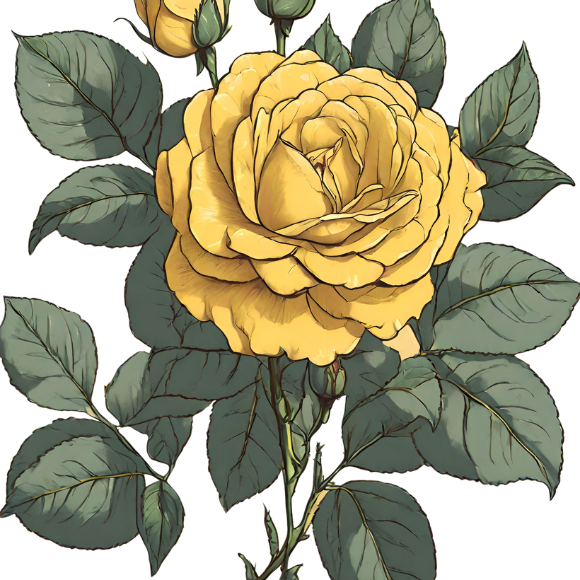
Whether you’re a seasoned gardener or just starting out, tending to roses can be a rewarding and fulfilling experience. So grab your garden gloves and your pruners and let’s get started on the path to cultivating a thriving rose garden!
Choosing the Right Roses
First things first, let’s talk about choosing the right roses for your garden. With thousands of varieties to choose from, it can feel overwhelming, but don’t stress! Start by considering factors like your climate, available space, and desired bloom color and fragrance. Do you live in a hot and sunny climate? Go for heat-tolerant varieties like Knock Out® Roses. Looking for a classic beauty with a delightful scent? Old Garden Roses might be just the ticket. Take your time exploring different options and choose roses that speak to your heart. Talk to an expert at your local garden center or extension center or explore the resources of the American Rose Society.
Location, Location, Location
Part of your quest for the ideal roses is having the perfect spot to plant them. Roses thrive in full sun, so choose a location that receives at least six to eight hours of direct sunlight each day. Good air circulation is also essential for preventing fungal diseases, so avoid planting roses too close together. Lastly, make sure the soil is well-draining to prevent waterlogged roots. If your soil is heavy clay, consider amending it with organic matter like compost or peat moss to improve drainage.
Planting Your Roses
Now that you’ve found the ideal spot, it’s time to get your hands dirty and plant those roses! Dig a hole that’s twice as wide and deep as the root ball of your rose plant. Gently loosen the roots and place the plant in the hole, making sure the bud union (the swollen area where the roots meet the stem) is at or slightly above ground level. Backfill the hole with soil and water thoroughly to settle the soil around the roots. Mulch around the base of the plant to help retain moisture and suppress weeds.
Watering and Feeding
Proper watering is key to keeping your roses happy and healthy. Water deeply and thoroughly, ensuring the soil remains evenly moist but not waterlogged. During hot and dry periods, you may need to water more frequently to prevent the soil from drying out completely. Additionally, feed your roses regularly with a balanced fertilizer formulated specifically for roses. Apply fertilizer in early Spring and again in midsummer according to the package instructions to provide the nutrients your roses need to thrive.
Pruning and Deadheading
Pruning is an essential part of rose care that helps promote healthy growth and abundant flowering. In late Winter or early Spring, before new growth begins, prune your roses to remove dead, damaged, or crossing branches. Cut back about one-third of the plant to encourage a bushier form and more prolific blooming. Throughout the growing season, be sure to deadhead your roses regularly by removing spent flowers. This encourages the plant to produce more blooms and keeps your garden looking tidy and beautiful.
Pest and Disease Control
Unfortunately, roses are not immune to pests and diseases, but with proper care and vigilance, you can keep them at bay. Common pests like aphids, spider mites, and Japanese beetles can be controlled with insecticidal soap or neem oil. Regularly inspect your roses for signs of disease, such as black spot or powdery mildew, and treat them promptly with fungicides if necessary. Good cultural practices, like proper watering and pruning, can also help prevent pest and disease problems.
Winter Care
Last but not least, let’s talk about Winter care for your roses. In colder climates, it’s essential to protect your roses from harsh Winter weather. Mulch around the base of the plants to insulate the roots and protect them from freezing temperatures. You can also mound soil or mulch around the base of the plant to provide additional protection. In regions with extremely cold Winters, consider covering your roses with burlap or other protective materials to shield them from frost damage.
With these basic care tips in your gardening tool kit, you’ll be well on your way to cultivating a beautiful and thriving rose garden. Happy gardening, and may your roses bloom bright and beautiful!


